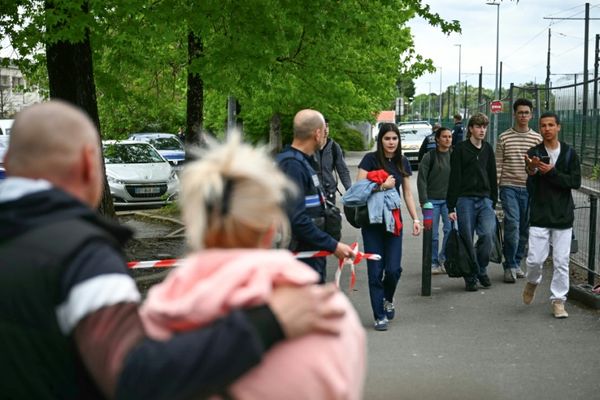Carbon dioxide emissions and the circular economy are both hot topics these days. While emissions are the problem, circular economy could be the solution, at least a partial one.
Our current economy is built on a linear model: we take the required natural resources from the ground, make products out of them, use them, and then throw them away at the end of their lives. This model is not sustainable.
The alternative is the circular model: take, make, use, recycle, reuse. Here, we extend the lives of products and use the waste they create as a resource with which to recreate similar or other products. This way, our dependence on natural resources can go down without compromising on our comforts or economic growth.
Now, can we create a circular economy for carbon dioxide (CO2) as well?
What are natural carbon sinks?
As we continue to burn fossil fuels and destroy our natural habitats, CO2 continues to accumulate in the atmosphere. Heat reflected by the earth doesn’t all escape to space; some of it is trapped by atmospheric CO2 and other greenhouse gases, leading to warmer land and oceans, accelerating ice melt, sea-level rise, and extreme weather events. As a result, we have food shortages, disease, loss of lives and property, forced migrations, and considerable suffering.
We need to stop emitting ‘new’ CO2 as well as remove some of the CO2 piled up in the atmosphere. There are a few ways to do the latter, with natural systems or human-made technologies.
Our planet has a rich biosphere, hydrosphere, and land mass, all of which are capacious carbon sinks. Trees and plants absorb CO2 as they grow, storing carbon in their biological mass. The oceans absorb and store CO2 through contact with air. The cycle of marine life – particularly as the mortal remains of fishes and plankton sink to the seafloor, where they are decomposed and the nutrients from their bodies are infused into the ecosystem there – also contributes. Soils hold carbon through microbial organisms and bubbles of air. The global temperature would have risen much more if these natural carbon sinks were not at work.
What is carbon capture?
Then, there are negative emission technologies developed to suck CO2 out of the atmosphere, called ‘direct air capture’. CO2 emitted as part of industrial processes can also be captured at source using ‘carbon capture and utilisation’ techniques. The CO2 thus obtained can be used to make items such as carbonated drinks, dry ice, fire retardants, and some chemical compounds. It can also be used in concrete curing and textile dyeing. These pathways open up the way to a fully circular economy.
The captured CO2 can also be used to synthesise clean high-efficiency fuel for aviation, shipping or long-distance trucking, where, instead of letting CO2 collect in the atmosphere, we bring it back and repurpose or resynthesise it as a fuel. Some companies have been able to do this already, although just at lab-scale.
Biofuels, which are made from biomass or biowaste, have also been envisaged as part of a circular economy for carbon. CO2 is absorbed by plants; the biomass and biowaste from these plants are then converted into biofuels, which can be combusted in engines, causing the released CO2 to reenter the atmosphere. This atmospheric CO2 is once again absorbed by plants and the cycle continues. Of course, care needs to be taken that there are no detrimental effects on the environment or society due to land-use change and an incentive to grow plants for fuel rather than for food.
What is the missing piece of the puzzle?
Carbon and CO2 are an essential part of our life and economy, and we can’t wish them away. Energy transition to renewables is a slow process. The shift to electric vehicles will take time and is wrought with issues ranging from the availability and mining of precious metals to the availability of stable battery technologies. Decarbonisation of steel, cement, and plastics manufacturing will also take time. Livestock will continue to emit methane (plant-based meat could be an alternative, such as the product for which the U.S. Food and Drug Administration recently cleared the way). Amidst all this, creating a circular economy for carbon may only be a panacea for the short term.
Creating a true circular economy for carbon will require multiple approaches, methods, experiments, and projects. Some of these experiments and projects are already commercial but only at small scale, while others are still being prototyped and tested.
Right now, the missing piece of the puzzle for generating fuel out of CO2, apart from commercial technology, is the energy required to capture and repurpose the CO2. There is more energy required to capture CO2 and convert it into a litre of fuel than the energy that this new litre of fuel will produce. So the day we solve this conundrum, we will have taken the first step towards a truly circular economy for carbon-based fuels. Reducing our fossil fuels consumption thereafter should be easier – and we can also be less stressed about the atmospheric concentration of CO2. But note here that the energy we use to capture and repurpose CO2 should be clean energy.
True to the saying ‘what goes up must come down’, we can achieve net-zero CO2 additions by using the stock of atmospheric CO2 over and over again. The rest of captured CO2 can be stored in the ground and lie there for aeons.
Rajan Mehta recently completed a fellowship from Harvard University, where he focused on climate change and circular economies. He can be reached at rm@climateactionlabs.org.







